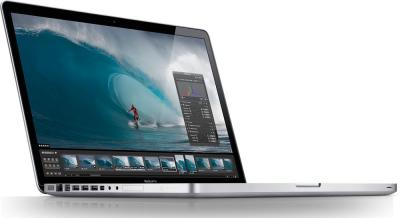Apple To Use Intel ‘Sandy Bridge’ Chips In New MacBooks

Apple will reportedly incorporate Intel’s upcoming Sandy Bridge Atom processors in its new line of MacBooks
Apple is to ditch the Nvidia GPUs it uses in its current MacBook lineup and will instead opt for Intel’s Sandy Bridge processors with its new machines, according to an online report.
“MacBook models with screen sizes of 13 inches and below are expected to switch to Sandy Bridge-only graphics,” reads the 9 December posting on CNET, which cites unnamed industry sources apparently familiar with Apple’s roadmap, “while higher-end MacBook Pros are expected to use graphics from Advanced Micro Devices.” The presence of Nvidia in those higher-end MacBooks is “unclear.”
Sandy Bridge is Intel’s attempt to integrate a number of nominally separate processor features, including graphics and management, onto a 32-nanometer chip. “Basically, we are very much putting together all that is required on a single piece of silicon,” David Perlmutter, executive vice president and general manager of the Intel Architecture Group, explained in September.
Combined Offering
Intel’s Turbo Boost technology, which increases power in individual cores based on workload demand, will allow Sandy Bridge to increase core power beyond thermal limits. And with its $7.68 billion (£4.8 billion) acquisition of security IT provider McAfee earlier this year, Intel will almost certainly integrate increased security features into its upcoming offerings.
 Intel CEO Paul Otellini has spent the past several months trumpeting Sandy Bridge’s performance, even suggesting during an October earnings call that the processor represents “the largest increase in computing performance in our history.”
Intel CEO Paul Otellini has spent the past several months trumpeting Sandy Bridge’s performance, even suggesting during an October earnings call that the processor represents “the largest increase in computing performance in our history.”
Intel is also prepping an “Oak Trail” Atom microprocessor aimed at tablets and other form-factors. The general expectation is that, once that chip is released in 2011, companies like Microsoft will use it to aggressively push into the tablet space. “Oak Trail is designed to be lower power,” Microsoft CEO Steve Ballmer told analysts during this summer’s Financial Analyst Meeting. “Lower power is good in a lot of ways. It leads to longer battery life, no fan, lower kind of noise levels, a lot less weight – a lot of things people like.”
Apple Choices
For its part, Apple engages a number of processor options for its products. The company’s bestselling iPad runs on the proprietary A4 microprocessor, which research firm iSuppli once suggested allows “the design of a system with a minimal space and cost dedicated to core electronics.”
Intel competitor AMD is prepping Fusion APUs (Accelerated Processing Units) under the code-names “Llano” and “Ontario,” due out in the first half of 2011, which will also consolidate computing and graphics technologies onto a single die.